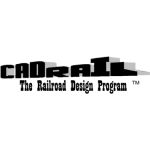
Here is a handy method for offset mounting of Tortoise switch machines when benchwork or tight clearances interferes with standard mounting. The method uses a wire crank. The upper crank arm (hidden on the other side of the wood block) goes up through 2″ foam before reaching the turnout. The crank is bent from .047 wire for stiffness. I used .039 wire for the drive arm to make it easier to bend the loops. The wood block is a 2×2, and a 3/32 brass tube inserted in the pivot hole acts as a bushing.

After experimenting I ended up with the following: pivot hole is 1-1/8″ below the foam, lower crank arm is 1-1/8″long, drive arm is 2-1/2″ long. The drive arm length is not critical and can be varied to make mounting convenient. First center the crank under the turnout throwbar hole and then fasten the crank block to the benchwork. Next mount the Tortoise, adjusting the location for proper throw.
Vendor Links





 N3IX Engineering
N3IX Engineering

